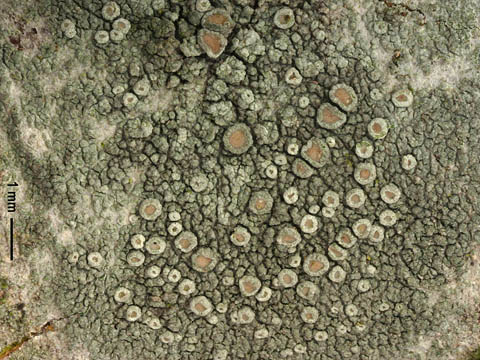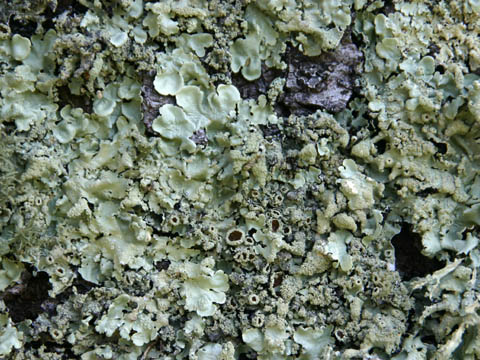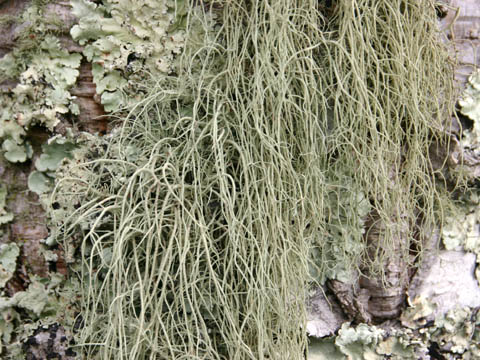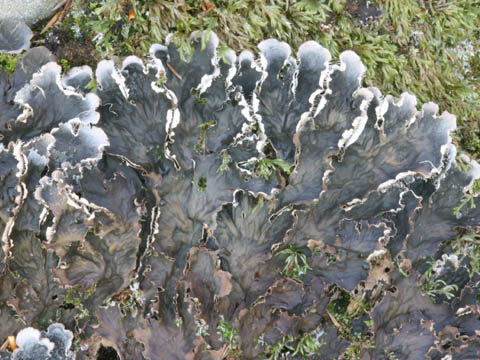|
|
|
|
|||||||||||||||||||||||||||||||||||||||||||||||||
Lichens as bioindicators of air pollution
|
|||||||||||||||||||||||||||||||||||||||||||||||||
Sensitivity and
tolerance
Certain lichen species are especially sensitive to air pollution, while others are especially tolerant. For example, many species are sensitive to even moderate levels of SO2 pollution and rapidly disappear from polluted habitats. However, the "pollution lichen" Lecanora conizaeoides is very tolerant of SO2 and other pollutants, and readily invades habitats vacated by sensitive species. Especially sensitive or tolerant species are referred to as "indicator species" because their presence or absences can be a relatively accurate predictor of the air quality. Fumigation experiments with whole lichens and isolated symbionts have established sensitivities for many lichens to SO2, NOx, HF, ozone and metals. These studies have shown that even low concentrations of pollutants can be damaging to sensitive species. Lichen community composition
can also indicate changes in air quality. In the United States, changes
in lichen communities have been correlated with changes in air quality
in southern California (Nash and Sigal 1998), Seattle (Johnson 1979),
Indianapolis (McCune 1988), and the Ohio River Valley (Showman 1990,
1997). A very good survey of this
literature can be found at: Air Quality and
Lichens - A literature review emphasizing the Pacific Northwest, U.S.A. Establishing the pollution
sensitivity of lichens requires both field and laboratory study, and
the following approaches are commonly taken:
Based on results of these
studies, indices of lichen sensitivity have been developed to provide a
measure of the air quality related values of information from lichen
surverys. The most familiar published lichen sensitivity
scales are those of Hawksworth and Rose (1970), de Wit (1976), Wirth
(1991), and Insarova et al. (1992), all for European lichens. These
scales are based on
correlations between lichen distribution data and air quality
monitoring data. In the Netherlands, where there is a
country-wide, high-density air quality monitoring network, very
accurate modeling of lichen responses to air quality has been done (van
Dobben and ter Braak 1999). In the United States,
sensitivity ratings are based on field data, literature surveys and
fumigation experiments. Commonly cited
sensitivity scales for U.S. lichens are those of LeBanc and De Sloover
(1970), Sigal and Nash (1983), Wetmore (1983), McCune and Geiser
(1997) and Peterson et al. (1992). The
lichen
communities of the Pacific Northwest have been studied most thoroughly,
and lichen sensitivities have been established for numerous species. A
summary of this information can be found at: The US Forest Service National Lichens and Air Quality Database and Clearinghouse. An illustrated listing
of species and sensitivities is also available at: Categories of
lichen biomonitors
Lichens can be assigned to
various functional groups based on their ecosystem roles and responses
to various pollutants. McCune et al. (2006) provide an overview and
discussion of these groups for the Sierra Nevada National Parks, and we
include those most useful for pollution monitoring in the NCR here.
Certain lichens are also known to be especially pollution-sensitive or
pollution-tolerant. Studies in the Pacific Northwest have helped to
identify lichens that are especially sensitive or tolerant of
pollution, and a
provisional air quality rating system has been developed for
numerous species. The categories may overlap since, for example,
nitrophiles or acidiphiles may also respond positively or negatively to
pollution:
|
NCR Lichens Home
 Lecanora conizaeoides, a pollution-tolerant acidophilous crustose lichen. Image © 2007 by Norbert Stapper from http://www.lichenology.info.  Flavoparmelia caperata, a nitrophilous foliose lichen used for elemental analysis. Image © 2006 by Paul Diederich from http://www.lichenology.info.  Usnea ceratina, an acidophilous, pollution-sensitive fruticose lichen. Image © 2006 by Paul Diederich from http://www.lichenology.info.  Peltigera praetextata, a pollution-sensitive cyanolichen. Image © 2004 by Paul Diederich from http://www.lichenology.info.
|
||||||||||||||||||||||||||||||||||||||||||||||||
| Allocetraria oakesiana S | Heterodermia speciosa | Parmotrema stuppeum | Punctelia rudecta NT |
| Anaptychia palmulata | Hypotrachyna livida S | Parmotrema tinctorum | Punctelia subrudecta NT |
| Candelaria concolor N | Leptogium cyanescens CS | Phaeophyscia adiostola | Pyxine caesiopruinosa |
| Canoparmelia caroliniana | Myelochroa aurulenta | Phaeophyscia orbicularis N | Pyxine sorediata |
| Cetrelia olivetorum S | Myelochroa galbina | Phaeophyscia pusilloides | Rimelia reticulata |
| Coccocarpia palmicola CS | Parmelia squarrosa S | Phaeophyscia rubropulchra N | Tuckermannopsis ciliaris AS |
| Collema furfuraceum CS | Parmelia sulcata NT | Phaeophyscia squarrosa | Usnea ceratina AS |
| Dirinaria aegialita | Parmelinopsis horrescens | Physcia aipolia N | Usnea strigosa A |
| Flavoparmelia caperata N | Parmelinopsis minarum | Physcia americana | Usnea sp. AS |
| Flavopunctelia flaventior N | Parmotrema dilatatum | Physcia millegrana NT | Marchandiomyces
corallinus para |
| Flavopunctelia soredica | Parmotrema hypotropum T | Physcia
stellaris |
Athelia arachnoidea para |
| Heterodermia obscurata | Parmotrema michauxianum | Physconia detersa | Nectriopsis parmeliae para |
